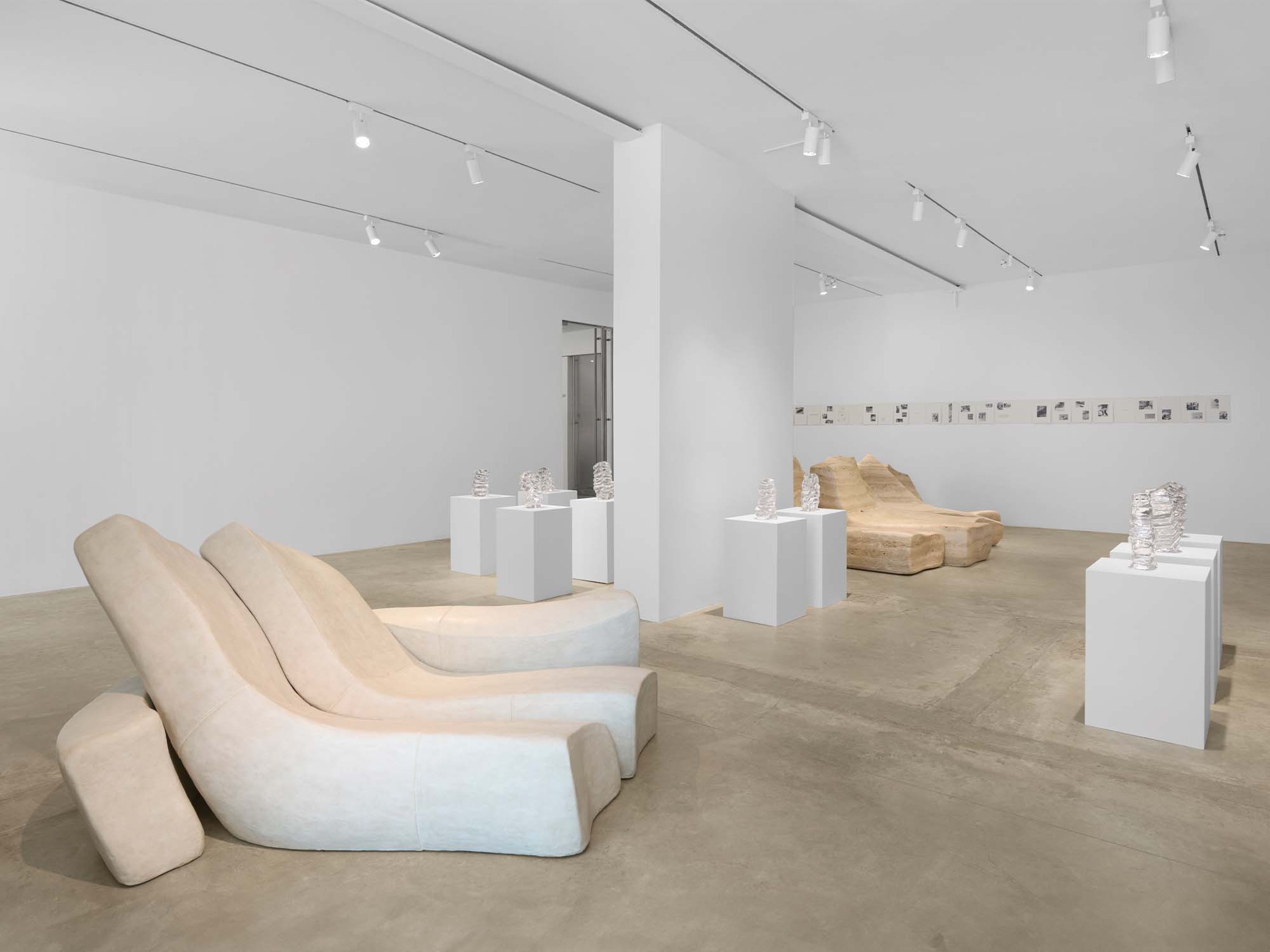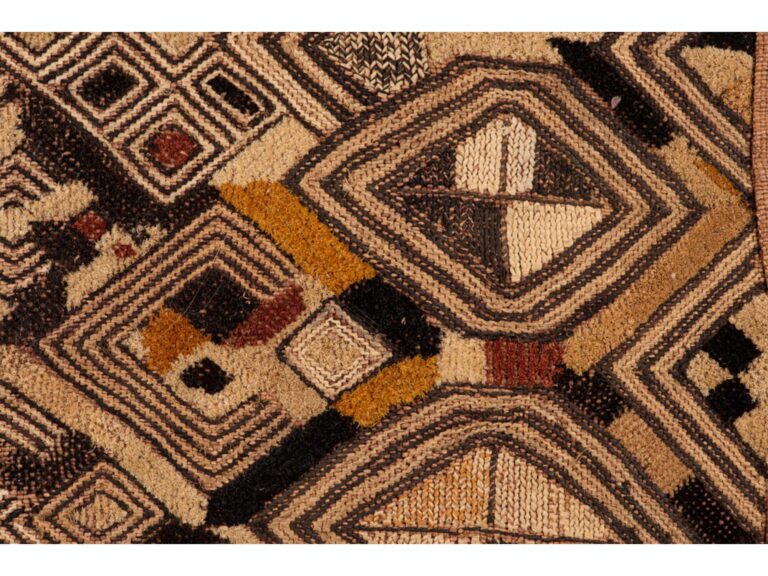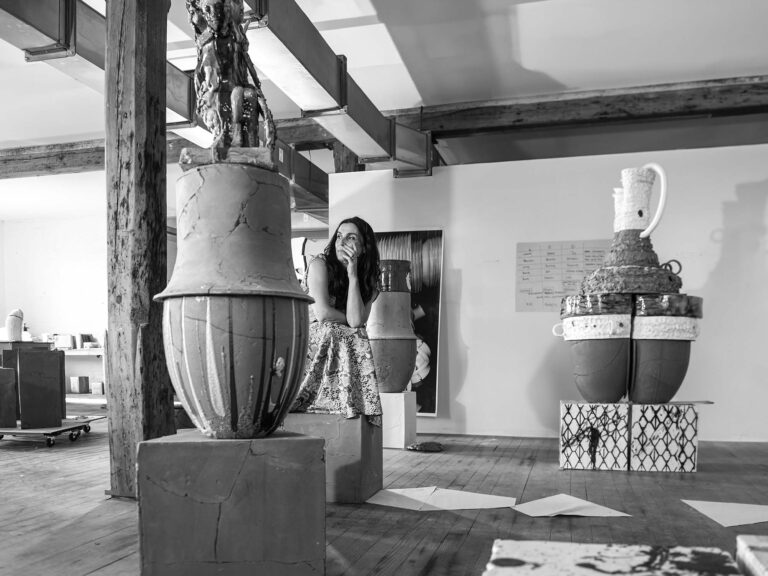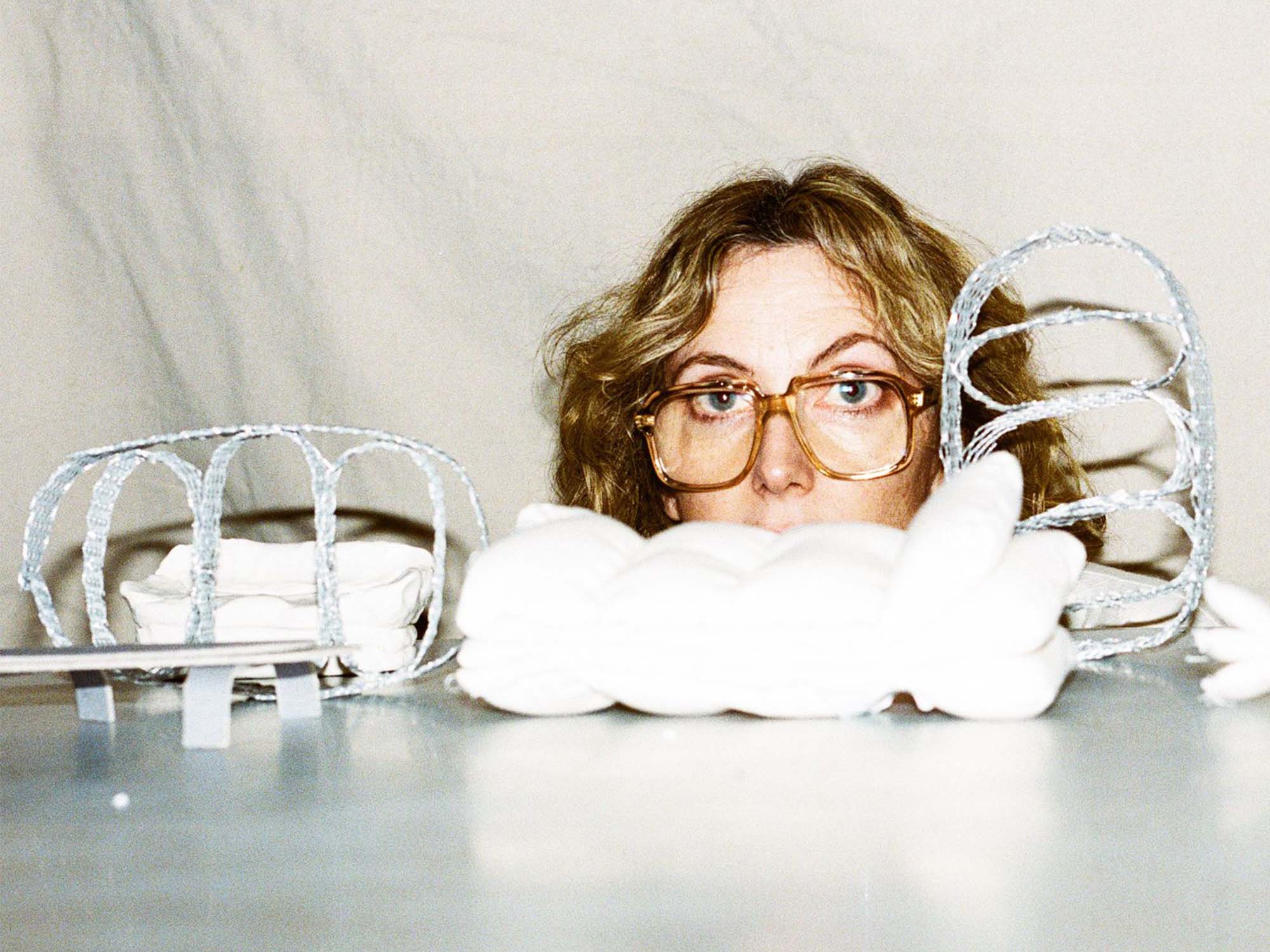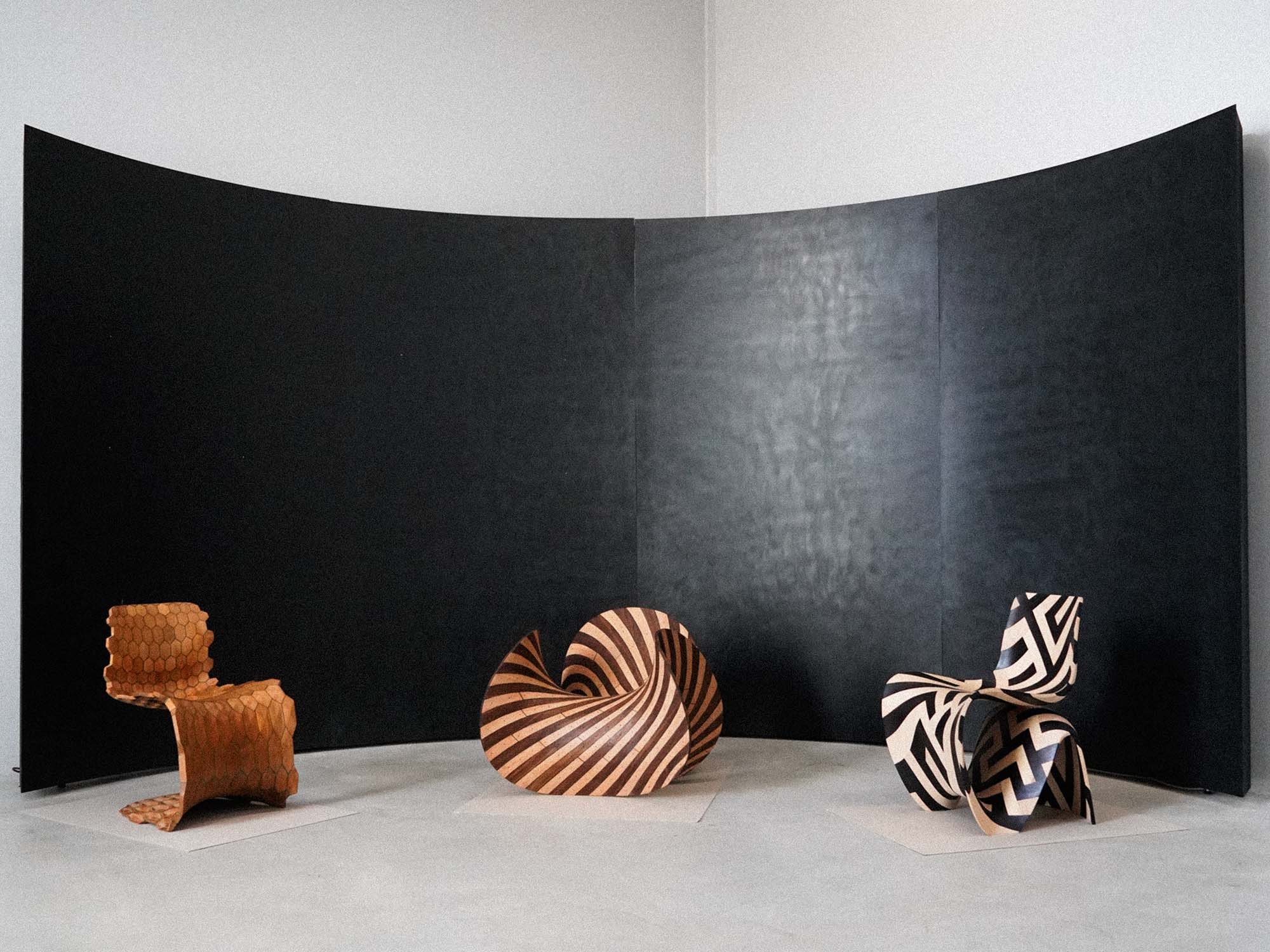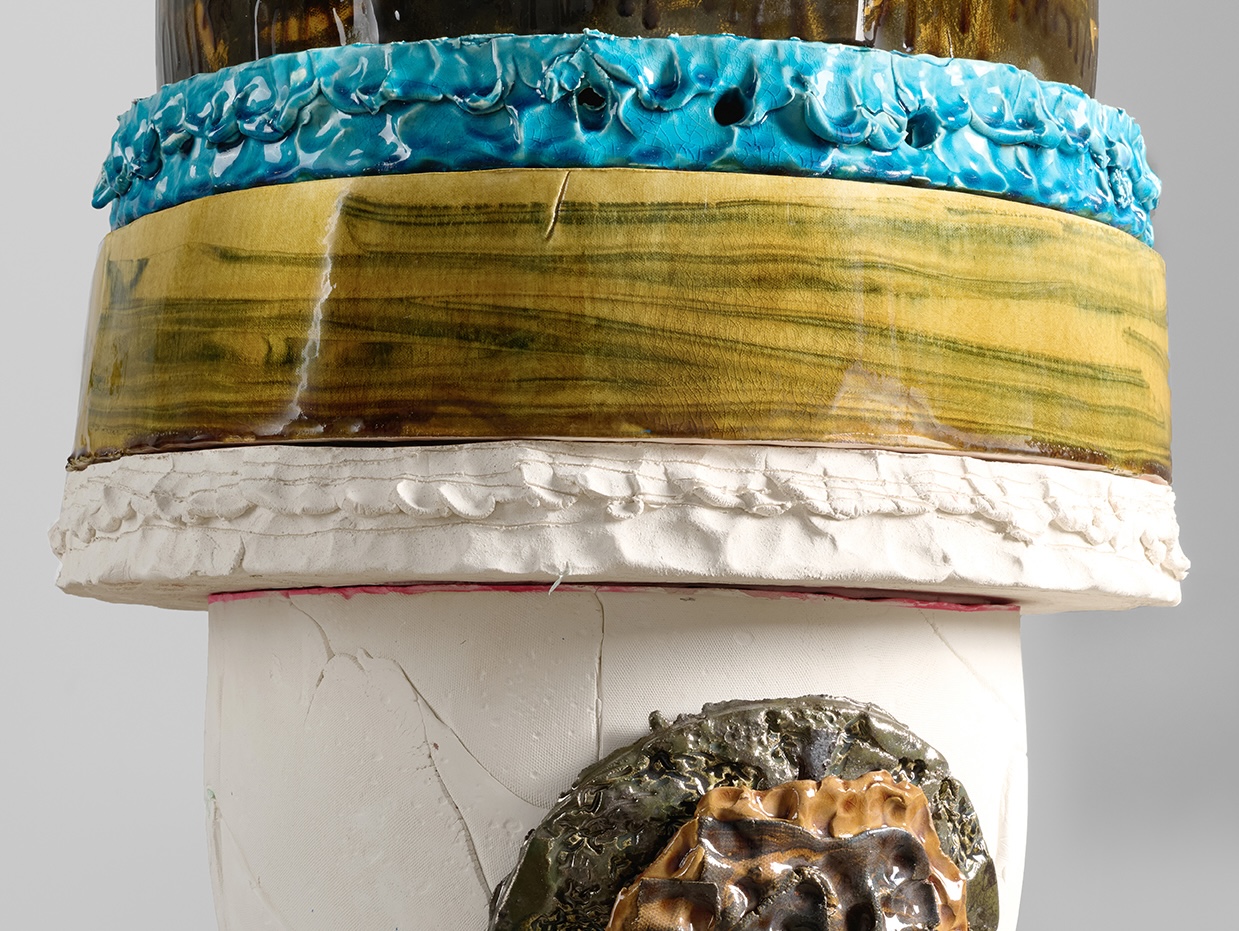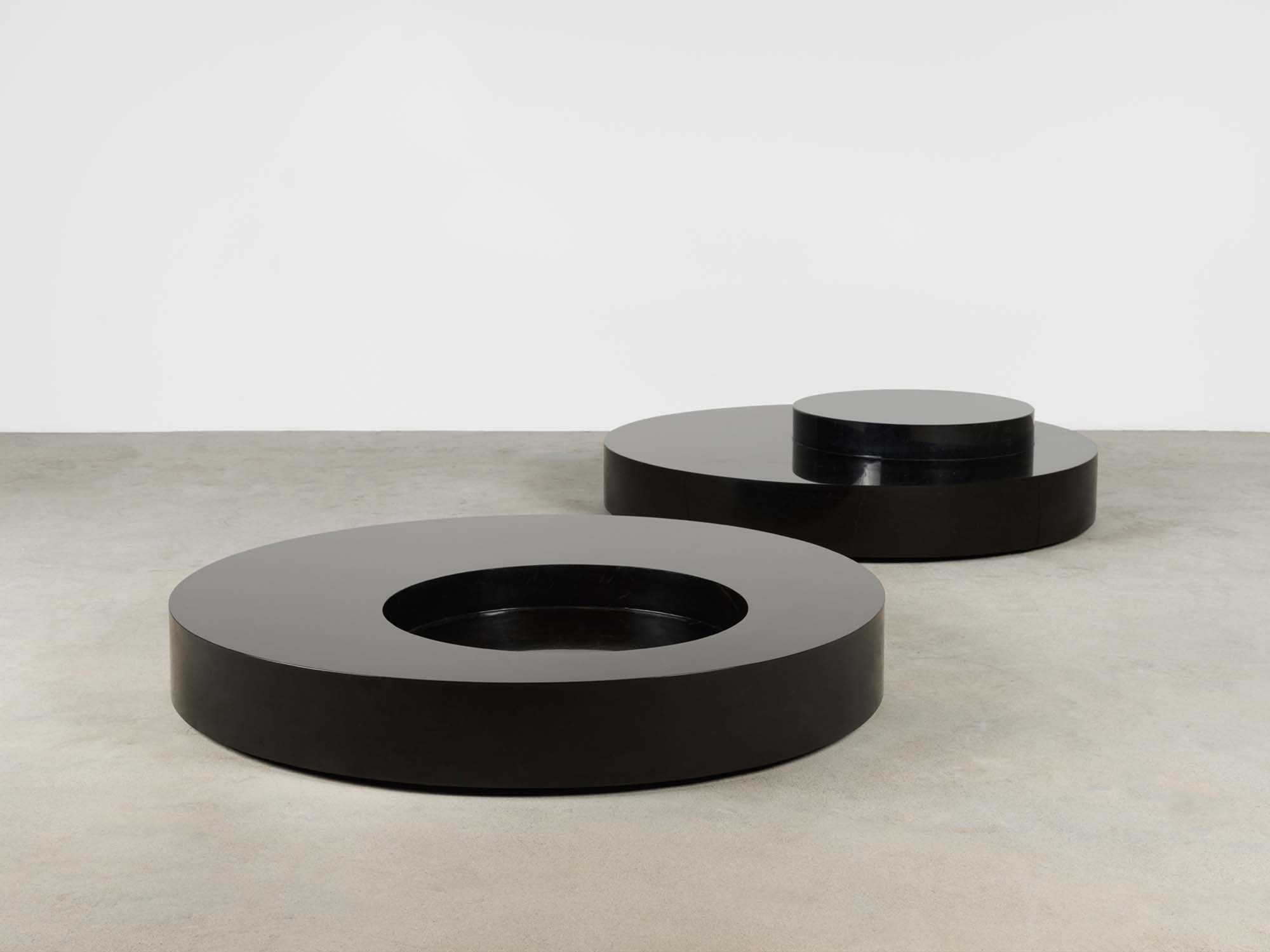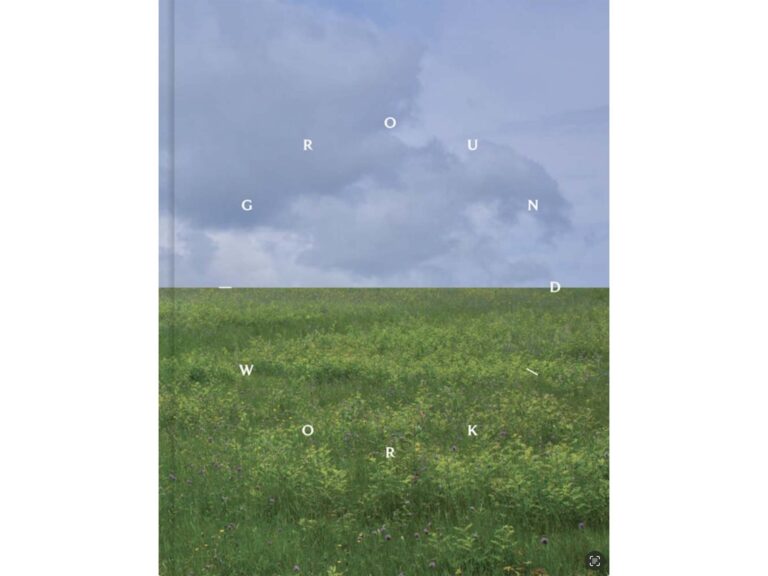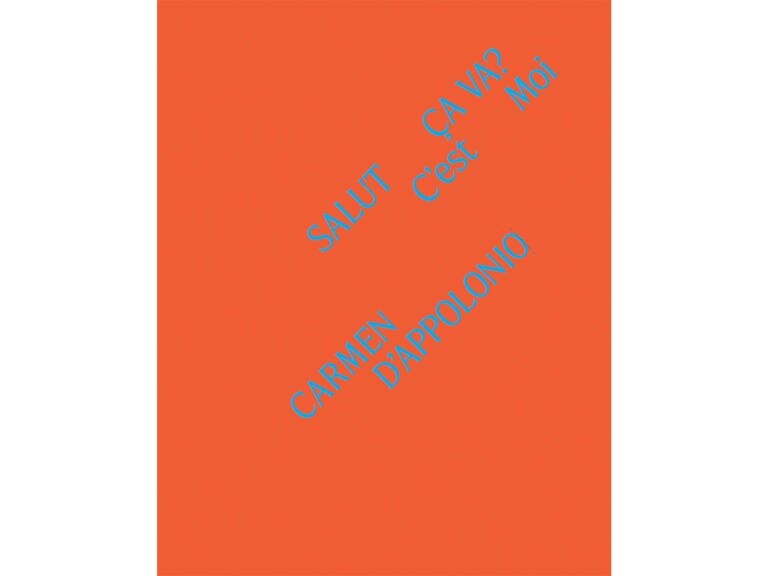By Anissa Touati
In the realm where boundaries dissolve, Najla El Zein’s sculptural work attempts to deploy poetic embodiments of the in-between – a liminal space where dualities coalesce or dissolve, interrupting harmonious wholes and the formation of stable identities. The curves and folds of her artworks suggest a continuous flow, as if the material itself is still in the process of becoming, frozen in a fleeting moment before its next metamorphosis. Najla El Zein’s sculptures seem to inhabit a liminal realm where matter is neither solid nor liquid but a delicate and yet still unstable balance between readily identifiable physical states. It summons the primitive strength of worked stone, rooted in its origins. Glass unfurls in fusion, born like liquid fire, shaping and freezing gestures. The malleable form of clay, on the other hand, is a call for the metamorphic power of the kiln, solidifying the ephemeral. All these forms are born either from reduction, metamorphosis, or accumulation. They are intermedial embodiments of an isthmus in perpetual motion. Najla El Zein’s work echoes the theorist Donna Haraway’s concept of “staying in the trouble,” which is deeply intertwined with notions of engagement with in-between spaces and multiplicities. No longer rigidly bounded or dichotomous in their thinking, they advocate staying in tangled or superimposed spaces, thresholds that destabilize binarities. Najla El Zein emphasizes the importance of various factors that contribute to the final result: “Each element in the process of working with these three materials shapes the final expression of the artwork: the stone as blank canvas, the deliberate sculpting gestures, the type of tools, the drying time of the clay and the seasonal influences, the glassblower’s breath, and the synergy of the team. These factors, guided by unseen forces of nature, embody the vitality of the present moment, making the artwork a testament to the dynamic process of existence.”
El Zein’s metamorphic works merge individual forms into an interconnected singularity. Contrasting textures, opacities, and lines dance together, resonating with the conceptual spaces explored by philosopher Mohamed Amer Meziane: “In El-Zein’s work, the in-between seems to be the very condition of the instant. The material seems to have become fixed in a spontaneous moment and place. The movement of the material is thus given form which manages to stabilize a living material without ever letting it die, to objectify a movement without immobilizing it. The material always opens a breach within the form that constantly questions its fixity. There is a spatial but also a temporal dimension to the in-between. The instant itself is between the past and the future which already saturates a present that is always in the process of passing, of abolishing itself. The concept of in-betweenness has become central for contemporary art and theory partly because it has helped generations to think beyond forms of totality, interrupting both binarism and the attempts to reconcile them, troubling fixed ‘identities.’ El-Zein’s work gives us a view of several dimensions of liminality on the border of space and time.”
The idea of time as interstitial can help us understand the immediate physicality in El Zein’s work. She invites us to revel in the tactile and to appreciate the malleable becoming of form and texture – El Zein’s sculptures as a visceral, embodied state of being are a provocative embrace of the body and its curves, of its undulations and their unapologetic presence in the world. In Najla El Zein’s hands, clay, stone, or glass are a poetic invitation to embrace immediacy – a reminder that true existence lies in the transitional spaces between, echoing the philosophical resonance of the liminal as a site of resistance, critique, and endless becoming. Territory between territories, El Zein founds her work, where “sensitive gestures” meet “sensitive horizons.” They emerge from primordial elements and interpenetrate that of another, a mutual nourishment and interaction, each drawing strength from the other, in the heart of the present.
This essay was originally published in exhibition catalogue Najla El Zein: Opacity, Transparency and Everything in Between, Friedman Benda, New York, NY, June 2024.
